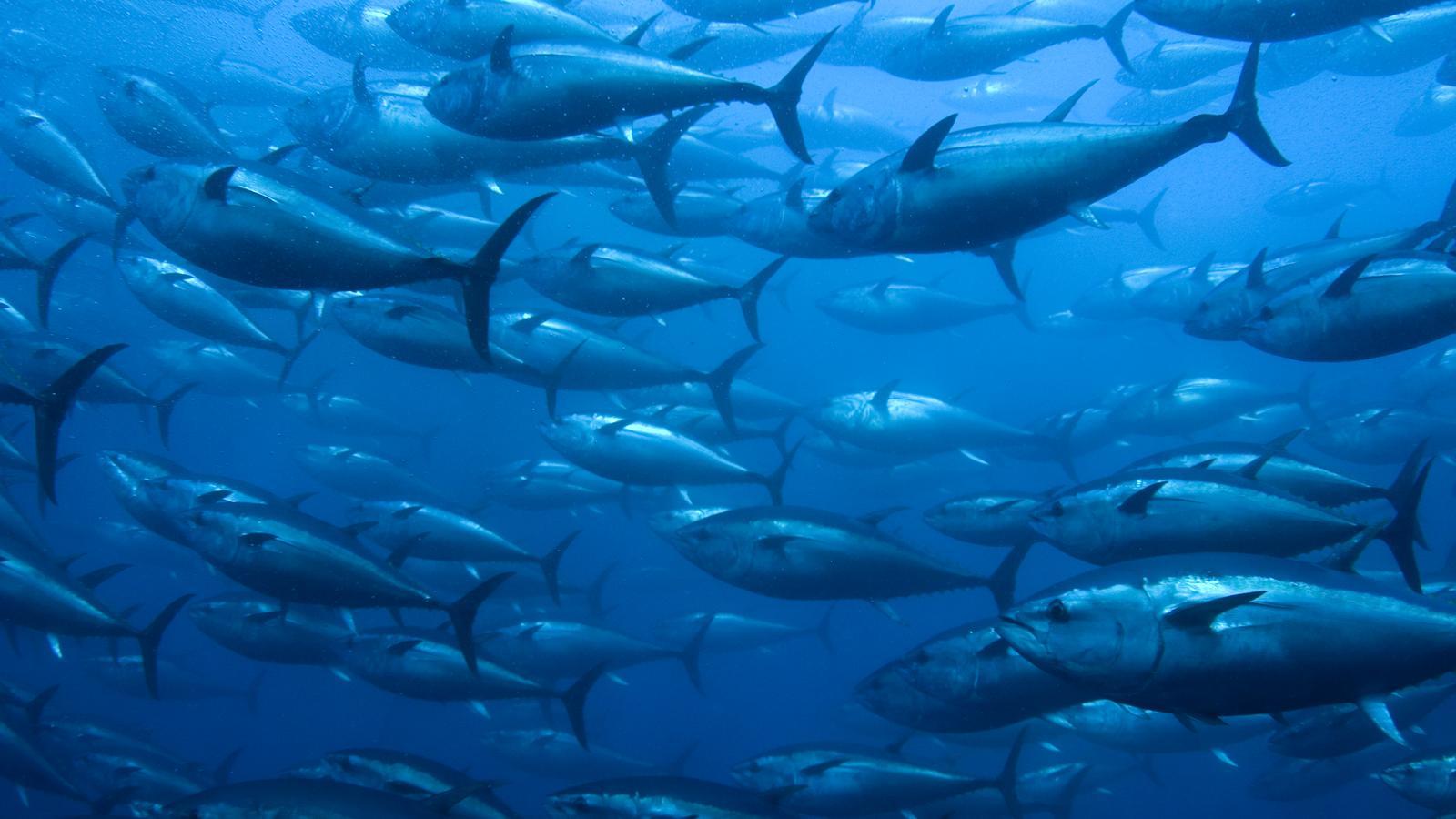The proliferation of tuna fish is putting fishermen on the ropes: "They're the wild boars of the sea."
Scientists confirm the recovery of the species, but maintain that there is no evidence of overpopulation.


GironaFrom being a minority species at risk of disappearing to becoming a real problem that disrupts the daily life of fishing. This is the radical paradigm shift that Catalan fishermen are denouncing regarding the proliferation of bluefin tuna on the high seas in recent yearsFrom the Ebro Delta to Cape Creus, the boats that go out fishing every morning must deal with hundreds of large tuna that surround the boats, scare away the fish, and damage the nets. Purse seine fishermen suffer the most. After attracting the attention of the school of anchovies or sardines with their spotlight, they come face to face with these large predators of blue fish that enter the net, feed at will, and scare away all the catches. "Like a wolf scaring the sheep" is the most repeated phrase within the sector.
Ferran Martínez, the skipper in Blanes, warns of the situation: "We've been saying for more than five years that it has proliferated. It has become a plague; it's the wild boar of the sea. This fish eats a third of its weight every day, and that means it's eating more every day than it should." Furthermore, since it is a protected species that cannot be fished without a license, artisanal purse seine fishermen also complain that if they accidentally catch them, they cannot make a profit and must release them back into the sea: "We can't even sell them, so after all the hardship, we can't even eat a piece of tuna."
The problem is not exclusive to the white fleet, but occurs throughout the Catalan coast, as confirmed by Antoni Abad, head skipper of Roses and president of the Catalan National Federation of Fishermen's Guilds: "The balance has been broken, the pyramid has been inverted. But now it had been inverted. You can't even look at them and they come out of the water." The sector, which describes the situation as a "tuna plague," is calling for measures similar to those taken by farmers with game, who conduct hunting drives to limit the wild boar and roe deer population: "If, for a certain period of time, scientists and the administration could capture a single animal to level the situation, they would have a rest from everything else. They would need oxygen to get through this ordeal," Abad insists.
In the early 2000s, fishing for wild tuna, a pulpy fish highly sought after in the marketplace, was completely uncontrolled, with a large industry of fishing fleets dedicated exclusively to catching this fish and marketing it wholesale. However, the decline of the species, caused by massive fishing, was halted in 2007 with the recovery campaign promoted by the International Commission for the Conservation of Atlantic and Mediterranean Tunas (ICCAT). The plan imposed reductions in existing quotas, controls on poaching, increases in minimum sizes, and closed seasons.
Since then, scientific evidence confirms the recovery of the population and also an increase in interactions with the small-pelagic purse-seine fleet. However, there are no indicators that raise fears of excessive overpopulation or that the anchovy or sardine banks have drastically decreased due to this predator: "It's true that we have much more bluefin tuna than in 2008, and that it has been progressively increasing since 2011 and 2012, but managing the population of this species is important," explains Ana Gordoa, a marine ecologist at the Center for Advanced Studies in Blanes (CEAB), who is part of the advisory committee that evaluates the status of the population and advises ICCAT on setting quotas. Gordoa does not doubt that the recovery of the species could hinder the work of artisanal fishermen, but clarifies: "We must also consider that perhaps, in addition to the quantity, the distribution of the tuna may have changed; perhaps it is now more coastal and closer to the coast than before because it is looking for food."
Tuna is a top predator at the top of the food chain and Ana Gordoa highlights its biological importance: "It is a great migrator, a very particular species, it can stay on the surface or dive to 1,000 meters deep, it regulates its temperature like very few fish do, and it has an enormous or tolerant transit. Iceland and Norway. It is a beautiful creature, and thanks to electronic tagging we are learning many things, but it is possible that we do not know even half of its behavior throughout its life," concludes the expert.
60 tons per year
In Europe, ICCAT fishing restrictions are transferred to the European Union, which distributes them among the member states, including Spain, which in turn distributes them among the fleets and fishing gear of all the autonomous communities. In Catalonia, in 2018, there were around 80 vessels authorized to catch tuna—four purse seine vessels in L'Ametlla de Mar, 11 longline vessels, and the rest using smaller gear. However, the Generalitat of Catalonia, through its Directorate General of Fisheries, requested an increase in the quota from the State, aware of the species' positive recovery figures and the sector's economic difficulties. Therefore, since 2023, another 40 smaller-gear vessels have been added, increasing catches by more than 30%, to a total of 60 tons per year.
Despite these changes, the sector is demanding more leeway to survive. In fact, in 2025, the ICCAT committee will meet in Seville, and, taking advantage of the occasion, the Catalan fleet intends to pressure the Spanish government to demand a larger quota from the European Union so that anchovy and sardine purse seine fishermen can catch a certain number of tuna.
